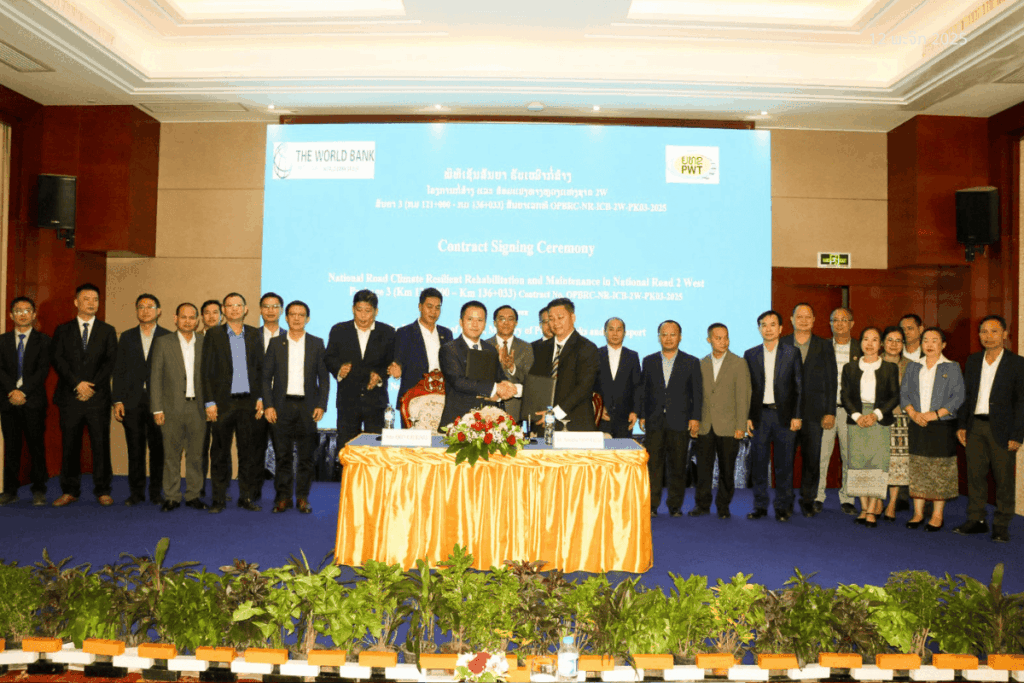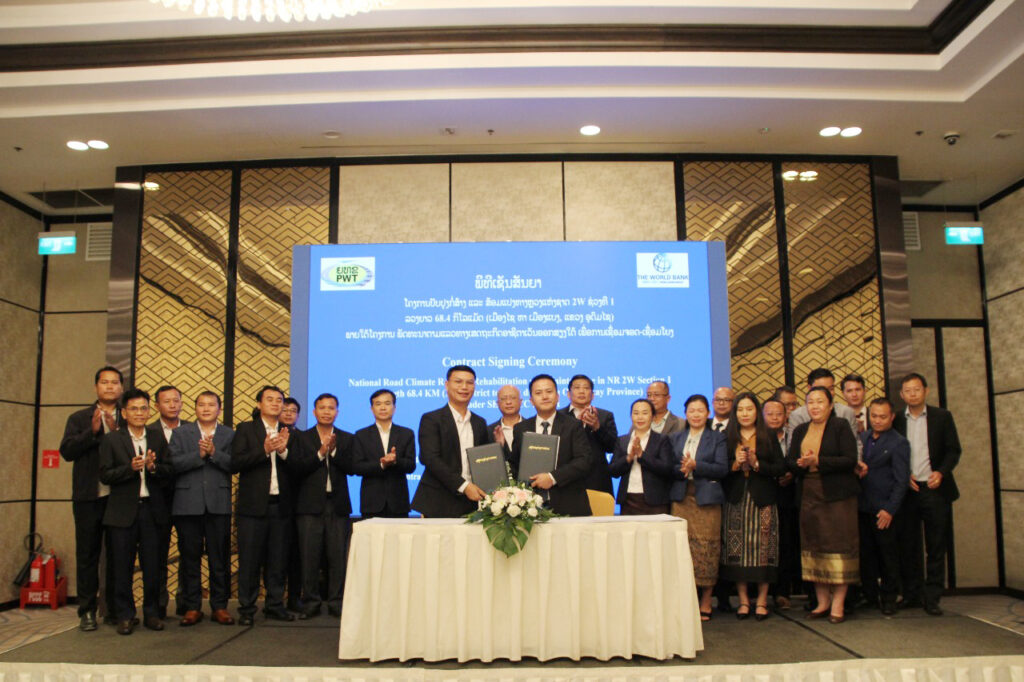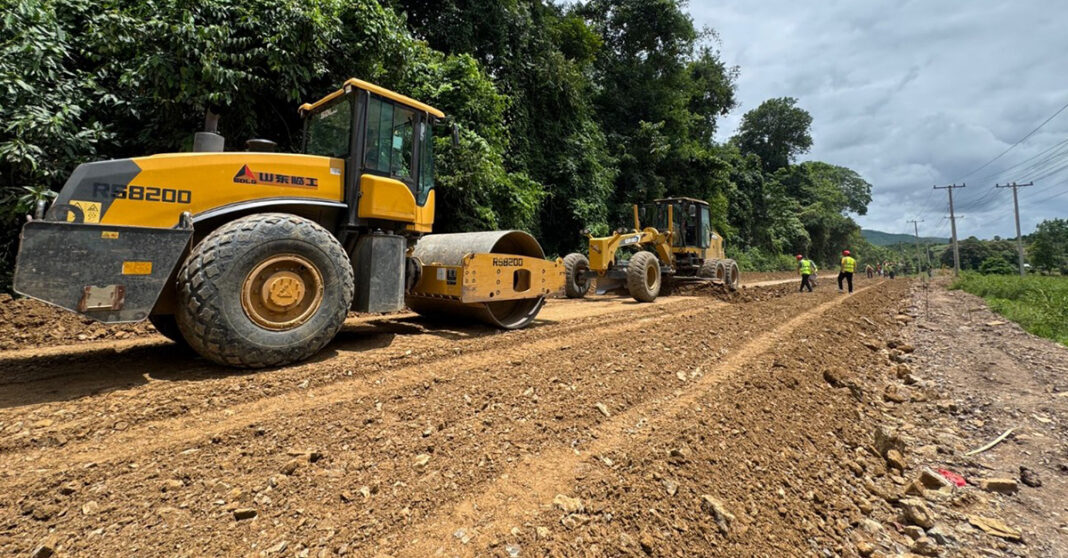On 11 November, the Ministry of Public Works and Transport (MPWT) signed a contract with China Jianxai International Economic and Technical Cooperation Co., Ltd. to construct and maintain a 15.03-kilometer (from kilometers 121-136) section of National Road No. 2W, linking Oudomxay and Xayaboury Provinces.

The USD 10 million project includes a 7–9-meter-wide asphalt concrete pavement, 8 centimeters thick, and four bridges.
The project was implemented under an output and performance-based contract (OPBRC), in which the contractor completed the road upgrade within three years and maintained it for seven years, for a total contract period of 10 years. The project was funded through a loan from the World Bank.
The upgrade of National Highway 2W in Oudomxay Province is expected to boost trade, tourism, and transport links between Laos, Thailand, and Vietnam.
The highway begins in Ngeun district, Xayabouly Province, bordering Nan Province in Thailand, passes through Oudomxay, and connects to Highway 2E, crossing National Road 13 North. From there, the route extends to May district in Phongsaly Province and continues to Dien Bien Province in Vietnam.
The road will be built to ASEAN Class III standards, following UNESCAP Asian Highway guidelines, for lower-traffic routes with a design speed of 60–80 km/h.
National Road No. 2W Upgrade Project Overview
This contract is part of the broader National Road No. 2W Climate Resilient Rehabilitation and Maintenance Project.

Phase I, launched in late July 2024, covered a 68.4-kilometer (from kilometers 0–68) section worth over USD 30 million, featuring seven bridges and six bus stops, and aimed to enhance trade and transport along the East-West Economic Corridor.
Phase II, expanded upgrades across Oudomxay Province, linking Xay, Baeng, and Houn districts, creating a seamless east–west transport corridor, covered USD 22.68 million (from kilometers 68–121) handled by Guangdong No. 3 Water Conservancy and Hydroelectric Engineering Board Co., Ltd.

Together, these phases aim to boost transport efficiency, trade, tourism, logistics, and climate-resilient infrastructure along one of northern Laos’ key regional corridors.



